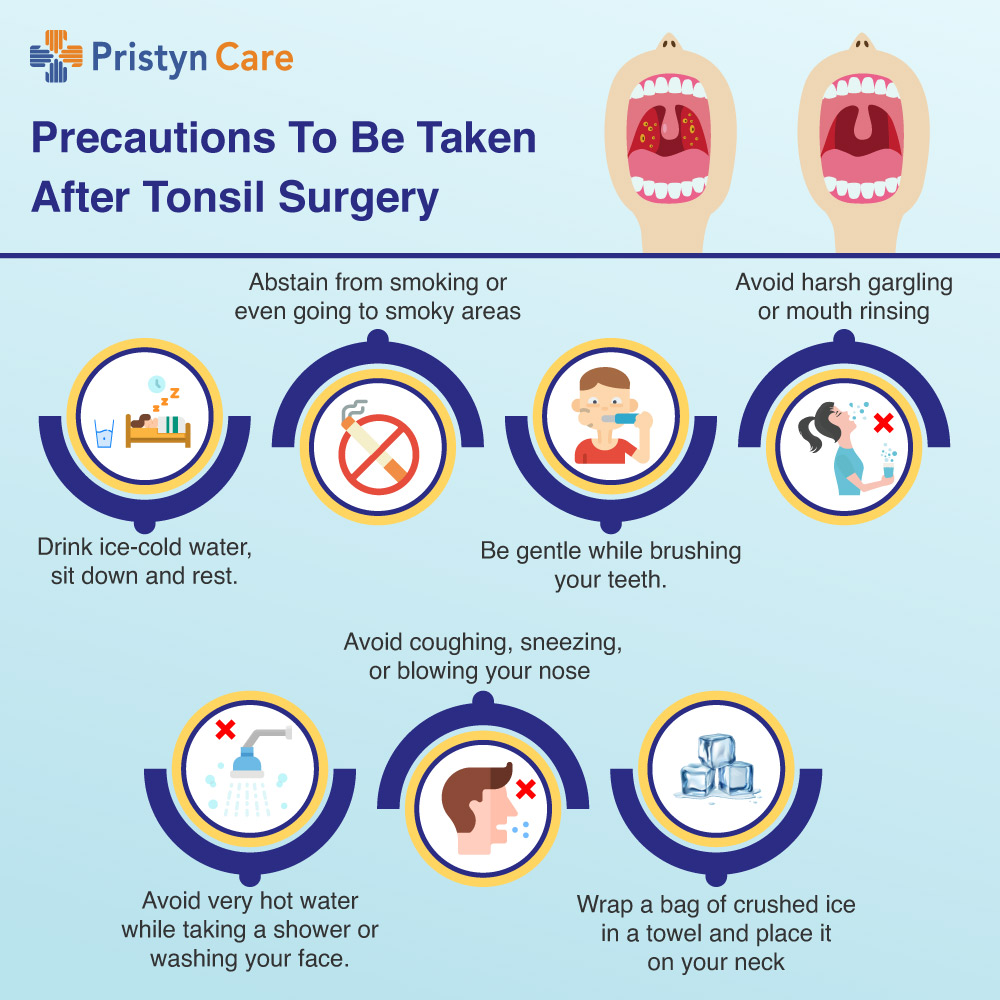
Tonsillectomy is usually done as an outpatient procedure. The patient can go home the same day after the surgery in an outpatient procedure. Even though it is a minimally invasive surgery, do not think that you will wake up normal the next day. Pain medication will be given to the patient which will ease the discomforts during the recovery phase.
The patient may feel tired or dizzy, which is a result of the anesthesia. The dizziness will go off soon after the Tonsillectomy Surgery. Other post-surgery discomforts may include soreness, nausea, and loss of appetite. It is normal for the patient to feel tired and wanting to sleep.
Some patients also complain of feeling pain in the jaws or towards the jawbone, ears, or neck. Getting plenty of rest, especially for the first 2 to 3 days after surgery is very important and can also give relief from the problems.
Table of Contents
What is common to have after a Tonsillectomy?
A fever of less than 38.8° C for about 3 to 4 days after surgery is normal. Patients commonly have the below-mentioned signs on the road to recovery, for about 10 to 14 days after the surgery-
- Pain or discomfort in the throat.
- Increased pain in the morning or after getting up from a nap.
- Bad breath.
- White patchy areas where the tonsils used to be.
- Increased pain around 7 days after surgery. This happens as the scabs formed where the tonsils were there before start to come off.
- Ear pain after the surgery.
- Neck pain after the surgery.
- Snoring.
Suggested Tips for Post-Surgery Discomforts.

- Give the patient something cold to eat or drink in about every 3-4 hours. Staying hydrated can lessen the pain.
- Take a lot of Sleep and rest
- Distract the patients’ mind from pain by indulging him in movies, games, music, reading, etc.
- Place an ice pack under the neck or forehead. An ice pack will help relieve the pain.
- Use a heating pad for the ear pain.
- Chewing gum can help reduce ear pain.
- Make use of a cool humidifier to decrease throat dryness and pain. Make sure that the water is changed at least once a day.
- Elevate the patient’s head using 2 pillows when he or she is lying down to allow easier breathing. This will also keep the airway more open.
What Foods to Say Yes to?
- Liquids like apple juice
- Sodas
- Warm coffee or tea
- Warm soup or broth
- Mashed potatoes
- Applesauce
- Jelly
- Soft pasta
- Bananas ( have them mashed in case of severe pain )
- Ice cream
- Popsicles
What Foods to Say No to?
- Tomato juice
- Lemon drinks or Lemonade
- Very hot beverages or soups.
- Carrots
- Raw apples
- Tomatoes
- Spicy foods
- Crackers, Chips or Nachos
- Dairy products ( dairy products can lead to nausea or vomiting after the use of anesthesia during the surgery).
A Word From the Doctor’s Desk
There is nothing that the patient cannot eat or drink after the tonsillectomy, but there are some hard or hot food items that should be avoided. For the first few days, the patient should be given foods that are cold and soft.
Avoid foods that are hard or sharp( like chips, nachos, pop-corn), spicy, or hot. Some patients may feel nausea due to the anesthesia used during the surgery. If the patient does not have the problems of nausea, enjoy as many of the cold and soft foods which will even help reduce the pain. Cold foods like ice creams, milkshakes or popsicles will help soothe the soreness of the throat and also help the patient stay hydrated.
Pain medication is also given to help reduce pain or other signs during recovery. Take the medicine as prescribed by the doctor. Get in touch with your ENT doctor if you have bleeding or fever after the surgery.
Also Read:







